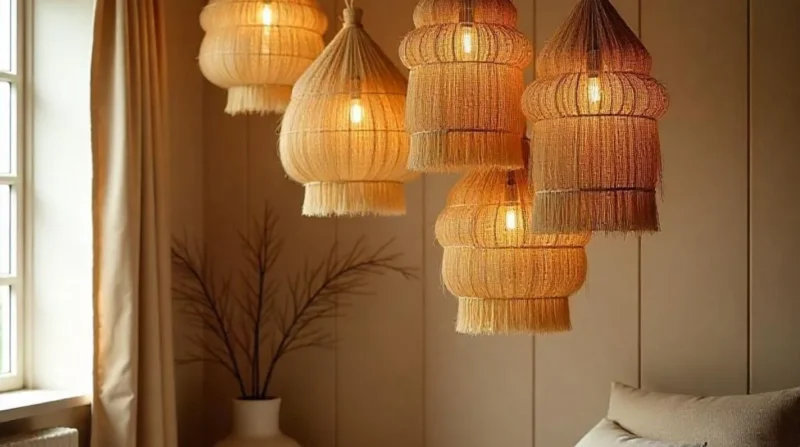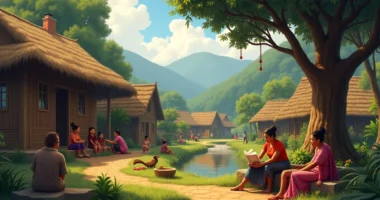Table of Contents
- Linguistic Origins of “Sodžius”
- Cultural Symbolism and Meaning
- Mythological and Spiritual Dimensions
- Preservation Efforts and Contemporary Relevance
- Historical Roots and Seasonal Craft
- Modern Applications and Innovative Uses of Sodžius
- Crafting Process
- Revival and Community Engagement
- Global Recognition and Future Prospects
- Challenges and Strategies for Preservation
- Conclusion
Sodziu, also known as straw gardens, are exquisite geometric structures crafted from straw that hold a cherished place within Lithuanian culture. These delicate, often ceiling-hung ornaments have symbolized harmony, prosperity, and spiritual unity for centuries. Their recent revival underscores a growing appreciation for traditional crafts and cultural heritage in modern times.
Linguistic Origins of “Sodžius”
The term Sodžius originates from the Lithuanian noun sodas, meaning “garden.” This word has deep roots in the Proto-Balto-Slavic language, deriving from sōdī́ˀtei, which means “to set” or “to plant.” Tracing further back, it connects to the Proto-Indo-European root sodéyeti, carrying the same meaning.
This linguistic lineage reflects Lithuania’s ancient agrarian society, where planting and cultivation were central to life. Beyond agriculture, the concept of “setting” or “planting” symbolized creating order and harmony, values intricately reflected in the design and purpose of these straw gardens.
Cultural Symbolism and Meaning
Within Lithuanian tradition, a sodas (garden) signifies more than just a patch of land; it is an enclosed, harmonious space representing fertility and spiritual balance. The straw gardens, known as sodai, capture these ideals through their precise geometric patterns and meticulous craftsmanship. Typically made from rye straw, these ornaments employ mathematical principles to form symmetrical shapes such as octahedrons and pyramids. Far from random, these shapes symbolize the universe’s interconnectedness and the balance between earthly and divine realms.
Traditionally, sodai are suspended above dining tables, cradles, and around the home during important celebrations like Christmas and Easter. They are believed to bring blessings, fertility, and wellbeing, serving as a tangible manifestation of harmony and order, core to the essence of Sodžius.
Mythological and Spiritual Dimensions
The structure of these straw gardens often reflects ancient cosmological beliefs. Many sodai feature three tiers representing the heavens, earth, and underworld, mirroring the mythological Tree of Life motif found across many cultures, symbolising the connection between different planes of existence.
The geometric shapes within Sodai carry rich symbolic meanings. Triangles are commonly linked to spiritual elements, while squares represent the material world. The interplay of these shapes within the straw gardens expresses the unity of spirit and matter, a concept central to numerous ancient belief systems.
Preservation Efforts and Contemporary Relevance
Acknowledging their cultural and historical value, UNESCO inscribed the tradition of Lithuanian straw garden-making on its Representative List of the Intangible Cultural Heritage of Humanity in 2023. This recognition has spurred initiatives to safeguard and promote the craft, ensuring that the skills and knowledge are passed down to future generations.
Today, artisans and cultural groups organise workshops and exhibitions to teach and celebrate sodai. These efforts preserve traditional methods while encouraging modern reinterpretations, blending ancient symbolism with contemporary aesthetics.
Historical Roots and Seasonal Craft
The practice of creating straw gardens dates back to antiquity in Lithuania. Historically, these ornaments were crafted during winter months when agricultural work slowed. Families would gather to create sodai, which were then used to decorate homes for festive occasions like Christmas and Easter. Their geometric patterns symbolised the universe’s balance, harmonising earthly and celestial elements.
Modern Applications and Innovative Uses of Sodžius
Beyond their cultural heritage, sodžiai are finding new relevance in various fields, harmonising tradition with modern needs:
1. Educational Resources
The precise geometric construction of sodžiai makes them excellent teaching aids for mathematics, symmetry, and spatial reasoning. Incorporating sodžius into curricula fosters hands-on learning and cultural appreciation.
2. Therapeutic Benefits
The repetitive, focused process of assembling straw gardens promotes mindfulness and relaxation. Art therapy programs use sodžius-making to reduce stress and enhance mental wellness.
3. Sustainable Interior Design
Made from natural rye straw, sodžiai are increasingly popular in eco-friendly decor. Designers incorporate them as hanging ornaments or light fixtures, combining sustainability with cultural elegance.
4. Cultural Preservation
Workshops and community events facilitate the transmission of skills between generations, strengthening community ties and safeguarding this intangible heritage.
5. Artistic Innovation
Contemporary artists experiment with new materials and scales, creating modern installations inspired by sodžiai, thus broadening their artistic reach.
6. Digital Archiving
Virtual galleries showcasing 3D models of sodžiai provide global access and preserve design knowledge for future generations.
7. Eco-Friendly Product Design
The efficient, natural construction principles of sodžius inspire biodegradable packaging and sustainable product concepts aligned with environmental goals.
Crafting Process
Making a straw garden demands precision and patience. Rye straw, valued for its durability and flexibility, is cleaned, dried, and cut into uniform lengths. Strands are threaded together to form complex three-dimensional geometric shapes, commonly octahedrons and pyramids, which symbolise universal interconnectedness. These pieces, often suspended and allowed to rotate, are thought to attract positive energy and balance.
Revival and Community Engagement
In recent decades, Lithuania has witnessed renewed interest in sodžiai. Artisans and enthusiasts actively promote the craft through workshops, exhibitions, and cultural events, attracting both locals and visitors. Modern adaptations incorporate novel materials and designs while respecting traditional symbolism, enhancing their appeal in contemporary interiors.
Schools and cultural centres have also embraced sodžius as part of educational and community programmes, nurturing cultural identity among younger generations. Organisations such as “Sodai” play a vital role by providing resources and facilitating connections between artisans and learners.
Global Recognition and Future Prospects
UNESCO’s recognition has brought international attention to Lithuania’s straw gardens, encouraging cultural exchanges and collaborations worldwide. This global interest highlights the importance of preserving intangible cultural heritage and celebrating artisanal craftsmanship.
Digital platforms like sodai.eu showcase virtual galleries, enabling global audiences to explore sodžiai interactively. Online workshops further democratise access, ensuring the tradition transcends geographical limits.
The sustainable, natural qualities of sodžius also position them as models for eco-conscious design in interior decor, fashion, and packaging, potentially opening new economic avenues for artisans.
Challenges and Strategies for Preservation
Despite their potential, sodžiai face challenges such as reduced availability of quality rye straw due to changing agriculture and an aging population of master craftsmen. Addressing these concerns requires coordinated efforts: promoting sustainable farming, establishing mentorship programmes, and securing governmental and private sector support to fund preservation initiatives.
Conclusion
Sodziu, or Lithuanian straw gardens, are much more than ornamental creations, they embody a rich cultural legacy that interweaves art, nature, and spirituality. Their intricate designs and profound symbolism offer a window into ancient worldviews while inspiring modern applications. As contemporary society evolves, preserving and revitalising such traditions reinforces the enduring value of cultural heritage across generations.









